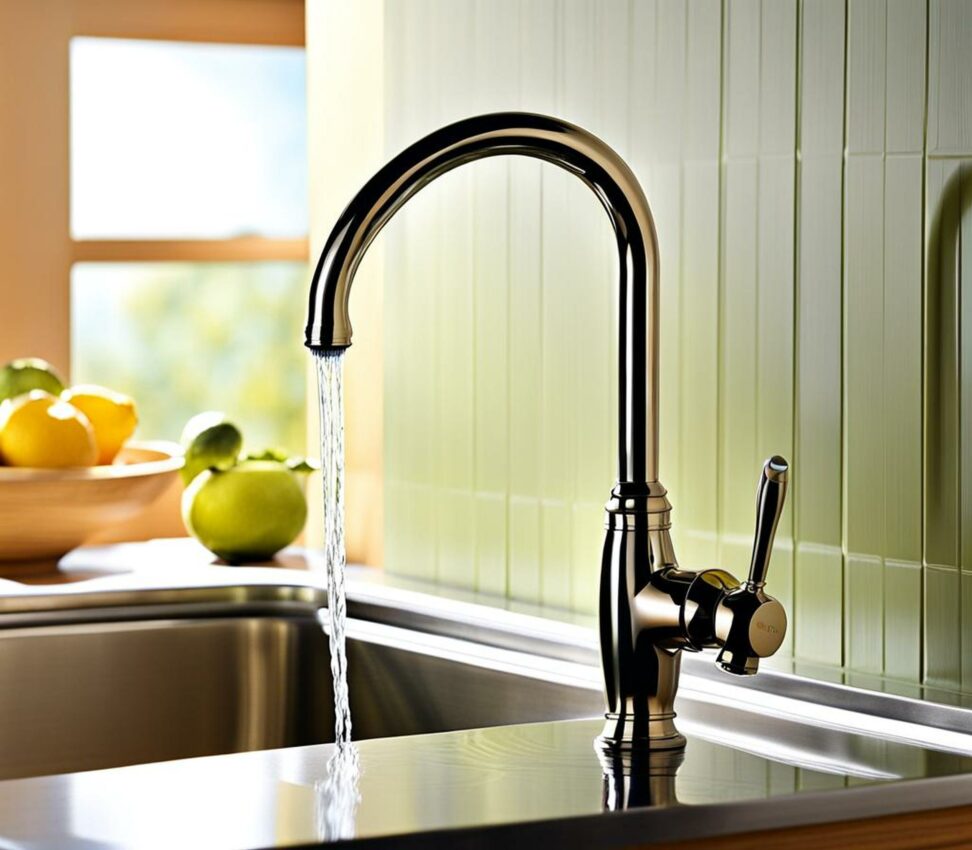Kitchen Faucet Leaking When Water's On? Here's The Permanent DIY Repair
Is your kitchen faucet dripping or spraying water every time you turn it on? This common but annoying issue is most often caused by worn-out internal seals. With some basic tools and replacement parts, you can likely repair that leaky kitchen faucet yourself and stop the maddening drip for good.
Repairing a leaky kitchen faucet is a straightforward DIY project that will save you money on plumber fees and finally eliminate the nuisance of that drip, drip, drip.

Symptoms of a Leaky Kitchen Faucet
The most obvious sign of a leaky kitchen faucet is water dripping or spraying from the faucet spout when the water is turned on. Depending on the location and severity of the leak, you may notice:
- A slow, intermittent drip when the faucet is on
- A steady stream of water leaking from the spout
- Water spraying wildly from the faucet neck
- Leaks coming from the handle base or under the sink
- Loss of water pressure
Detecting the Leak Type
To properly diagnose the problem, determine if the leak is coming from the faucet spout, handle base, or hoses under the sink. Turn off the water supply valves and turn on the faucet to relieve pressure. If water still leaks without water pressure, it indicates an issue with seals or components inside the faucet body.
Causes of Kitchen Faucet Leaks
Worn-out O-rings and washers are the most common causes of leaky kitchen faucets. However, mineral deposits and general wear can also lead to leaks over time.
Worn-Out Washers and O-Rings
The rubber O-rings and washers inside the faucet handle and spout deteriorate after years of use. This allows water to drip or spray out around the worn seals. Replacing these rubber parts is the simplest fix for a leaky kitchen faucet.
Mineral Buildup
Hard water deposits can calcify on faucet valves and mechanisms. This prevents them from completely shutting off, leading to drips and reduced water flow. Preventing mineral buildup by using purified water and upgrading to ceramic valves can help.
Damaged Internal Components
The plastic, rubber, and metal pieces inside a kitchen faucet are subject to wear after years of use. Valve springs, cartridges, seals, and O-rings can all crack or corrode over time, causing leaks and water pressure problems. These components may need replacement.
How To Repair a Leaky Kitchen Faucet
Fixing a leaky kitchen faucet is an easy DIY project with the right tools, parts, and steps. Here is a general process for repairing a leaky kitchen faucet yourself.
Gather Supplies
First, gather the necessary repair supplies:
- Adjustable wrenches, screwdrivers, pliers, etc.
- Replacement O-rings, washers, seals, or cartridge for your faucet model
- Plumber's grease
Shut Off Water Supply
Start by locating the shutoff valves under the sink and turning them clockwise to shut off the water supply. Turn on the faucet to relieve any remaining pressure.
Disassemble Faucet
Following your faucet manufacturer's instructions, carefully disassemble the faucet handle and spout. Pay close attention to the order and orientation of the internal parts as you remove them.
Identify and Replace Leaky Parts
Inspect washers, O-rings, springs, seals, etc. for cracks and damage. Replace any worn parts and clean away mineral deposits. Apply plumber's grease to the replacement O-rings and seals.
Reassemble and Test Faucet
Reinstall the faucet parts in reverse order, ensuring everything is aligned correctly. Turn the water back on and check for leaks. Make adjustments if drips persist.
Preventing Future Leaks
To help avoid more leaky faucet issues down the road:
- Use filtered water to reduce mineral buildup
- Inspect your kitchen faucet annually for wear
- Proactively replace washers and O-rings over time
- Consider investing in a commercial-grade faucet
When to Call a Professional Plumber
While minor leaks are easy DIY fixes, call a professional plumber if you:
- Can't diagnose the source of the leak
- Don't feel comfortable disassembling the faucet
- Can't find the right replacement parts
- Try the repairs but the leak persists
For major leaks or complex kitchen faucet problems, it's often best to have a plumber handle the repair.
Repairing a leaky kitchen faucet is usually an achievable DIY project. With some basic tools and replacement seals or washers, you can often permanently fix that frustrating drip and stop wasting water.
By following a systematic approach to diagnosing and repairing kitchen faucet leaks, you can save the hassle and cost of multiple plumber visits. And you'll gain the satisfaction of resolving the problem yourself.